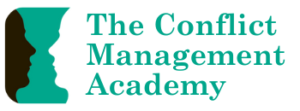I was delighted to discover that David and Alikki had published this book on restorative practice. They are two of the leading academics and practitioners in the field and have combined their many years of experience to provide an accessible and much-needed overview of this field of practice.
The book combines theory, research, and practice insights into a comprehensive resource for anyone interested in restorative practice. It also explores the history of restorative programs internationally (particularly in Australia, England, US, Canada, and NZ). It covers contexts including the criminal justice system, educational institutions, workplaces and communities.
The book explores the history of restorative practice, from victim offender reconciliation/mediation programs, group conferences, circle processes, and other processes used within justice systems, community settings, and non-government agencies.
Importantly, the book provides clear definitions for the variety of terms used in the field, which will be useful to avoid future confusion. In particular, it distinguishes between “restorative justice” programs and processes (which are justice-system related, e.g. diversion from court, support for sentencing, engagement under-sentence, pre-release planning, post-release support) and the broader term “restorative practices”, which incorporates restorative processes used in any context.
The book also provides a very clear distinction between restorative principles, programs and processes.
The term “setting relations right” is also explained carefully, as going beyond repairing relationships to include establishing, maintaining, and deepening relationships; neutralising conflict associated with bad relationships; and the internal changes for individual participants.
I particularly valued the detailed explanation of the importance of affect theory in restorative practices.
The authors provide a thorough explanation of how a restorative process can be adapted for different types of cases, including for: addressing an incident, a history of poorly resolved incidents, issues of general concern, and a legacy of betrayal trauma.
The first four chapters address ‘where we have been, and where we are now’: the evolution of practical theory, key processes, core skills, and how best to apply these processes and skills in familiar settings. The remaining two chapters examine ‘where else we can go’ with restorative practice: supporting institutional reform, dealing with the psychologically and relationally complex work of addressing individual and collective trauma, coordinating service provision across different programs within a district, city, or region – and using restorative processes to democratise decision-making more generally. The authors also describe the learning systems that help practitioners to consolidate, evolve and extend their skills.
This book is essential reading for anyone working in the field of conflict resolution.

